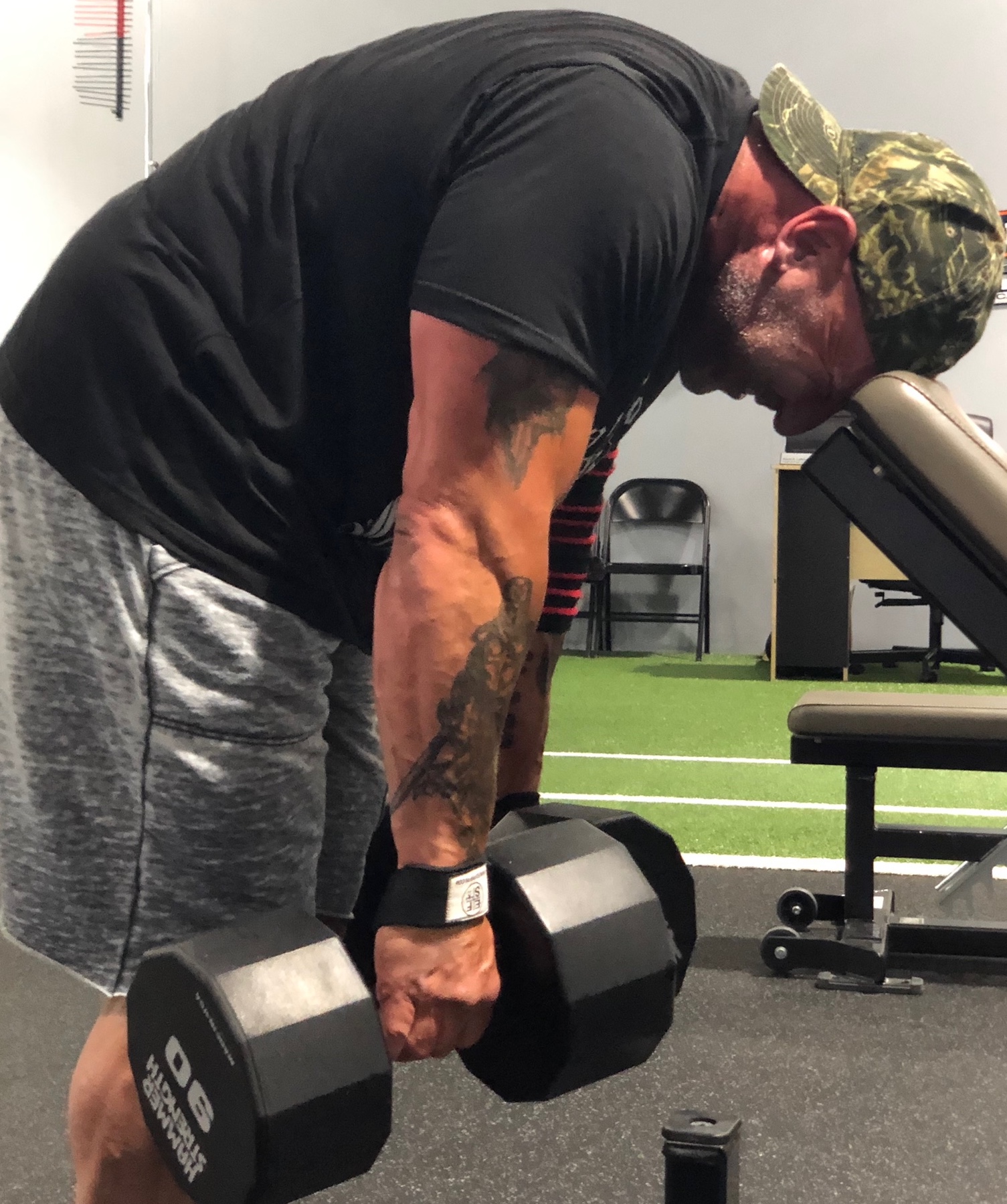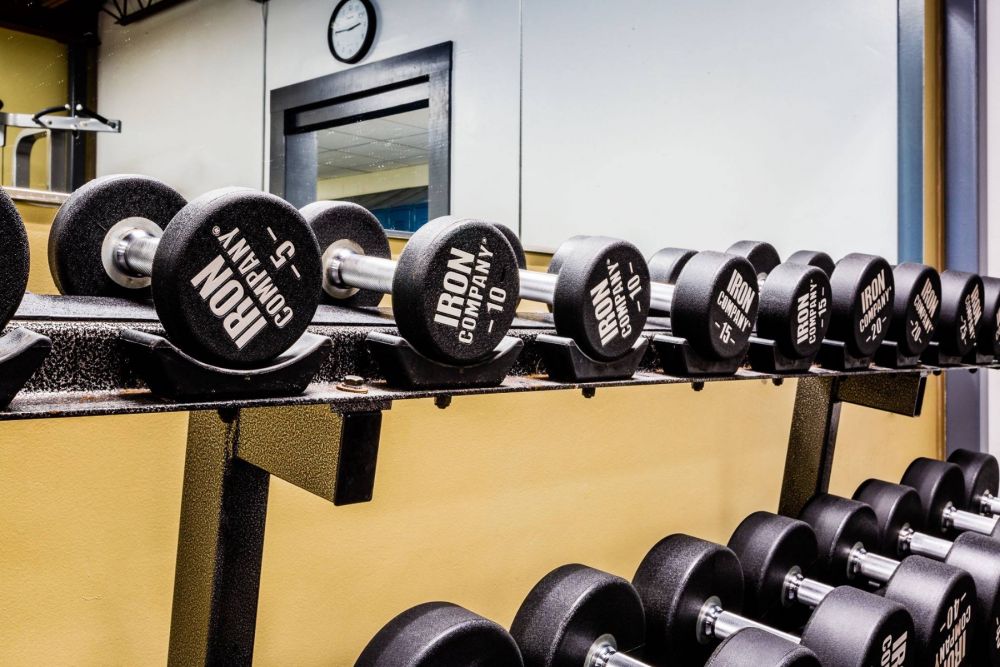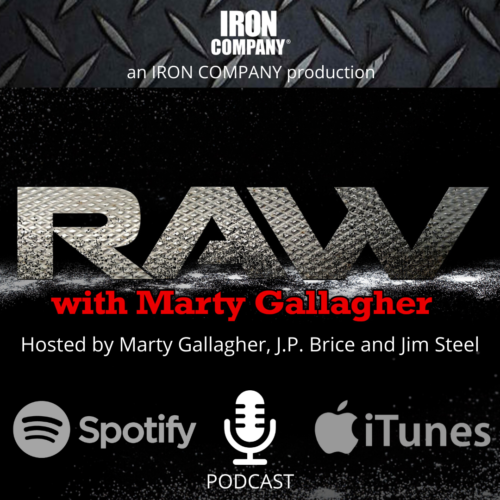
The Advantages Of Dumbbell Training For Size and Strength Gains
If someone perused a weightlifting program of mine today versus ten or so years ago, they would notice that my choice of exercises have changed dramatically and have embraced dumbbell training as well as other strength training equipment. Ten years ago, I was still powerlifting and my main exercises that I performed (deadlifts, squats, bench presses, bent rows) were all performed with a barbell with very little dumbbell training, if any. I was striving to gain absolute strength and those barbell exercises were exactly what I needed to reach my powerlifting goals. But, with all the heavy free weights, the surgeries began to mount. I had two elbow surgeries, spine surgery and some other annoying ailments that never amounted to surgeries, but they hampered my progress nonetheless. And it wasn’t just powerlifting, it was also some old stuff from football. I needed to change my training if I wanted to continue training.
And I’m not complaining, because I have always understood that 800 pound squats and 700 pound deadlifts and 500 pound benches and playing football for years were not “good” for my health in the long run. Eventually, I paid the price. So be it.
But with all that stuff, I still needed to train, still needed to feed the Iron Bug that lives inside of me, so I began to train for bodybuilding. When choosing exercises, I changed some things around from the powerlifting days.
What was the biggest change that I made?
I began to use some exercise machines and different types of weightlifting bars that didn’t bother me, such as trading in the straight power bar for squats for a safety squat bar.
But the biggest change was that I began to use a dumbbell set for most of my exercises. I knew that dumbbells require greater stabilization and that forces your body to recruit more muscle fibers to stabilize the weight. Also, the dumbbells allow more freedom of movement, for instance, I can train my chest with dumbbell flies and can go below my torso to get a good stretch, which I can’t do with a barbell. And the dumbbell bench press allowed me to use a neutral grip that didn’t bother my shoulders like a straight bar bench press did. I began using dumbbell training for other body parts also; lateral raises for shoulders, one arm rows and pullovers for the lats, db curls and hammer curls and dumbbell preacher curls for biceps, behind the head dumbbell triceps extensions and dumbbell shrugs for traps. What I found out after a while was that I was adding muscle at a good clip with the dumbbell training.
In addition, with the freedom of movement that dumbbells provided, my joints felt better than they had in forever. I did add some machine movements in my program, but the mainstay of my program became dumbbell training. I have fallen in love with all types of lateral raises; seated with dumbbells, standing with dumbbells, holding onto the power rack and working heavy weights where I cheat a little on the way up and lower it slowly. And since I have emphasized the laterals in all of my shoulder workouts (sometimes performing ten sets at a time), and deemphasized the press, my shoulder, which always felt a bit wonky, has felt much better. And regarding the press, I do like the dumbbell shoulder press better than the barbell. More freedom of movement, more fiber involvement. I really concentrate on the mind/muscle connection here, and slow negatives, but when I was younger, I tried to really push the weight on dumbbell shoulder presses. The reason is that I had seen the Barbarian Brothers in person at a seminar, doing seated dumbbell shoulder presses with the 150 pound dumbbells and ever since, I have pushed hard on them.
Here is an example of a typical 4 day training split that emphasizes dumbbell training:
Day 1 - Dumbbell squats, dumbbell Romanian deadlift, also could add dumbbell step ups or lunges.
Day 2 - Dumbbell preacher curls, dumbbell alternate curls, dumbbell triceps extensions, pushdowns.
off
Day 3 - Dumbbell flyes, dumbbell bench press, side laterals, rear raises, dumbbell incline bench.
Day 4 - One arm rows, dumbbell pullover, dumbbell support rows (lying facedown on an incline weight bench)
Regarding the Day 1 session, an absolute great leg workout is dumbbell squats holding the dumbbell vertically to your chest. Marty Gallagher was demonstrating them at a recent seminar that we did together and many of the comments from the attendees were positive, and they felt like the exercise would be useful as a core lift (like back squats), but also as a warmup to a back squat session with a barbell. When we train Special Forces guys, I always recommend them using the dumbbell squat as a warmup for their squatting motions. Many of those guys have nagging injuries that may make it painful to squat with a bar, so they use them as a main exercise. Same thing with the athletes that I train, I introduce the dumbbell squat as an essential warmup for their legs and also a core movement. For an advanced, super strong trainee, there becomes a limiting factor in how much weight you can actually hold, so they will use it as a warmup or after they save it as a “finisher” where they do a high rep set or two just to really fry the legs.
Many of the exercises can also be performed with kettlebells. And speaking of kettlebells, I use them for training sessions, especially when travelling.
I remember one fishing trip that my son and I went on years ago. I had gotten certified to teach kettlebell training a few weeks before, so I was into them. We were way out in the country, staying in a cabin while we were fishing and I decided to bring a 24 kg kettlebell for the trip. I just put it in the back of my truck. Before I left for the trip, I told myself that I would do 300 swings a day, no excuses. So each morning, right before we went down to the river to fish, I’d get my kettlebells and start swinging, with my dogs curiously watching me and my son patiently waiting for me to finish, fishing rod in hand. I did the 300 swings a day program for a few weeks, and I noticed that my forearms, shoulders and hamstrings had gained some size, in addition to the cardiovascular benefits the program provided. It's the simplicity of the kettlebell that I like, along with the variety of exercises that one can perform with them. Turkish get ups are also a great adjunct to any training program, and can be done 2-3 days a week for shoulder stability and abdominal strength.
I really feel like dumbbell training is something that must be included in everyone’s training program. They are effective for both strength gains and hypertrophy. Take a month or so and really push the dumbbell training (with some kettlebells thrown in also) in your program. You will not be disappointed with the gains!
About The Author
Jim Steel has been immersed in athletics and the Iron Game for most of his life. He has been a college football player and coach, powerlifter, Muay Thai fighter and is currently a competitive bodybuilder. In 1999, Steel was named Assistant Strength and Conditioning Coordinator at the University of Pennsylvania, and moved up to Head Strength and Conditioning Coordinator in 2004. He is the owner of the blog basbarbell.com, and is a motivational speaker, frequent podcast guest and the author of two books, Basbarbell Book of Programs and Steel Reflections. Steel is a Certified Strength and Conditioning Specialist with the National Strength and Conditioning Association.



